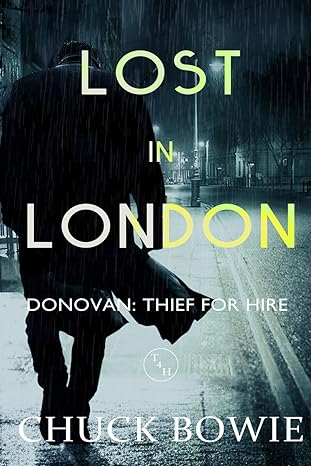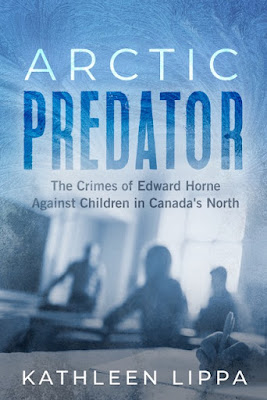Hello everyone.
I expect that if you visited my
website today, you are most likely an avid reader, always searching for the
next great book.
Read on my friends.
One.
This has been one of my favourite
reads from a NB author.
Well researched and a well written.
Amid the Splintered
Trees
From Goodreads:
But suddenly, the conflict in Europe erupts into war, and they are asked to sacrifice everything. Nothing could have prepared Will for the death and devastation he faces in the muddy trenches of the Western Front. As his losses mount, he struggles to remain the man Emma knows and loves. Emma is forced to tackle her own obstacles as a woman in a man’s world of medicine, alone, without his support. From her patients to her classmates, it seems no one truly believes her capable. Just when she thinks things cannot get worse, a devastating explosion levels her city, and Emma is called to her own front line.
From the blood-soaked ground of Ypres, the Somme, and Vimy to the 1917 Halifax explosion, each of them are tested in ways they never could have imagined. Wounded in body and soul, can they find a way back to each other or will their future be destroyed by the Great War?
From the author of Somewhere in Flanders: Letters from the Front comes a sweeping novel of love, loss, and redemption during the First World War.
Loic Wedden, a friend of Donovan has a problem. His daughter Áine has disappeared. He believes she is with friends, likely visiting art galleries in London.
Áine’s secret, however, is that she is on a mission to steal Irish artefacts from England and return them to their Ireland. Things change in the midst of the first theft, and now Áine is Lost in London .
Donovan must extricate her, while avoiding placing her friends in peril. The crimes begin to mount up, and he begins to suspect that all of the friends are indeed lost. The mess becomes more complicated, and an attempt at a rescue could force a choice between saving Áine, or saving her friends.
Buy it HERE.
Three
This
is a well told story from a debut novel by another talented author. Published
by Merlin Star Press and their #1 choice, it has received a lot of wonderful
reviews.
The Widow and the Will
Rhonda Bulmer
From Goodreads:
Lindy Hall has begun a promising career in Toronto with her boyfriend, George. When Grandma Runa, her only living relative dies, Lindy receives a shocking bequest—the d’Avray Manor Inn in Harmony Bay on New Brunswick’s Bay of Fundy.Lindy takes two weeks off to visit the inn. Locals call it The Widow’s Inn, haunted by the grieving widow of its first owner. She finds herself on a collision course with the proprietors, Tony and Anne Allaby. In the face of bankruptcy, Anne is bitter. Lindy is sure the couple is holding something back.
When a handsome tour operator vies for Lindy’s affections, and the ghost of Elizabeth d’Avray visits her, an impatient George urges Lindy to forget it all and come home.
Could Gram’s final wishes and The Widow’s Inn be the keys to unlock Lindy’s mysterious past—and her future?
Buy
it HERE.
Four
This is a cozy mystery which I truly enjoyed reading, as I have with all his previous novels. This was book #2 from Merlin Star Press and it also is receiving great reviews.
The Romanian Cleaning Lady
Zev Bagel
From Goodreads:
Lizzy Bright has just opened her office as a private investigator and her first inquiry seems like a prank. When the case takes her into the murky world of prostitution and human smuggling Lizzy is in over her head, until retired Detective Inspector William Breasy appears. But Breasy also has his air of mystery, not least the fact that he was a friend of Lizzy’s father, who vanished when she was eleven. The shadows from her past weave through the darkness of the present, pulling Lizzy deeper into a web of dangerous secrets.
Based in the historic city of Canterbury in England, this is the first in the Bright & Breasy mystery series by Zeb Bagel.
Buy
it HERE.
Five
This
novel is another terrific read from an author more know for his scary tales but
with a neat change in genre, he has spun another delightful story.
Something Happened in Carlton
Pierre Arseneault
From Goodreads:
Life in a small town can be hard, it's nearly impossible when the bonds between neighbors and friends begin to unravel.
People used to say that nothing ever happened in Carlton, but there is a lot going on in this small town, and Police Chief Clovis McPhee is in the middle of it all even as he struggles to let go of the life he worked so hard to have. Neighbors Garth Blackett and 93-year-old Eli Woodman's feud over garbage threatens to become more than a war of words as Garth runs into the reality that he's not as great as he thinks he is. Raylene McPhee is doing anything and everything she can to support the man she has loved her entire life, but at what price? Mayor Jack Ledger is furious that the elderly Ms. Musgrave has erected a huge Christmas display in her yard in July, and nobody but him seems to care how this will affect his reputation. Officer Libby Terwilliger must let go of the man who has been like a father if she's ever to step into his shoes while Bonnie Campbell desperately tries to keep the Carlton Gazette from failing before its time. The seemingly mundane and random events of this small town coalesce as something happened in Carlton.
Buy
it HERE.
Six.
I
love this lady’s stories. This novel is a winner and I’m sure you will enjoy
it.
Birch Island: And the Secrets it Held.
Suzanne Casey
From
Amazon:
Leo starts to come to the island every Tuesday for lunch and a game of Scrabble with the eccentric octogenarian. He listens to Ms. King reminisce about her eventful past while nibbling on Neapolitan wafer cookies.
She shares details about her upbringing, her schooling and her marriage. However, the more Ms. Peaches talks, the more questions Leo has, including the disappearance of several staff members.
Hired by Peaches' own daughter to uncover the truth, Leo goes on a fact-finding mission that takes him from Nova Scotia to Massachusetts. By doing so, he uncovers more than he expected.
This Rare Earth is a graphic account of twenty-five years working for some of the largest mining and engineering companies in the world. Much of this work was conducted in conflict zones where Jeremy Thomas Gilmer supervised the construction of dams, mine tailings structures, and oil and gas facilities. Through personal stories and detailed observations, he brings to life the daily realities of those caught in the crossfire of progress―miners, villagers, and local leaders who grapple with the promises and perils of development.
Gilmer describes nerve-wracking situations dealing with corrupt authorities, natural disasters, and project failure. He writes about his time in Northern Angola at the end of a bloody civil war, discusses building a gold mine in cartel territory in Colombia, and looking for water in the windswept pampa of southern Argentina. He writes about crawling a kilometer into a pipe in the high Andes to inspect damage and about night shifts at a vast Arctic diamond mine. He has driven through a blazing jungle in Eastern Bolivian forest fires and survived tense standoffs with armed Pork-knockers, or South American itinerant miners.
Gilmer writes from a place rarely heard from in the debate: an industry linked not only to the environmental challenges we face as a species, but to the very systems our lives― and economy―depend on. This Rare Earth is an unsparing, thought-provoking, and frankly confessional dive into the unseen costs of our technological and industrial addictions.
“You’ve gotta listen to me a second,” she said, her face suddenly serious. “If you can do what I do, you’re gonna find out not every painting is nice. Be careful about which ones you visit and which ones you jump to…Paintings are magical. They’re a reflection of the artists passions, dreams, and loves, but also their fears and doubts. I think there might be some things out there that thrive on that stuff. You’ll know what I’m talking about when you see them. You mind them.”
When twelve year old Joseph tragically loses his mother, his world is shattered. Left with his angry, alcoholic father in their rundown apartment, he finds himself longing to be free of the life he’s been stuck with.
Staring into a generic landscape painting in the church basement at his mother’s funeral, he almost gets his wish; a mysterious girl in an Iron Maiden vest steps out of the picture, opening his eyes to impossible and incredible worlds. Joseph longs to follow her into the painting but before he can join her, he is ripped away and sent to St. Theodore’s Academy, a correctional school run by a sadistic headmaster.
Aided by his only friend, Odilon Mercier, Joseph will stop at nothing to escape St. Theodore's. His only hope at freedom is through the magical, strange, and dangerous worlds of the paintings he finds within the school.
But something else lurks within them. Something dangerous. Something hungry.
Nine
Well, you know I can’t recommend some stories without including one of my own. So, forgive me for blowing my own horn. This is my favourite story to date. I loved writing it.
One Bedroom Ark
Allan Hudson
From Goodreads:
Jeb Coyne, proprietor of Coyne’s Confectionary, will have been widowed for two years tomorrow. Tending to his daily business takes his mind off the looming anniversary for a moment, as do his customers, whether cheerful or grumpy. But he’s never felt so alone. With the workday finished, Jeb is a few minutes from locking the doors. He goes out to bring in the sign board his father made and is interrupted by a tiny voice asking if he is closing. Olivia Fletcher stands before him, a teenager with wet strands of hair across her cheek, a baby in her arms. This chance meeting will change both of their lives forever.
Buy
it HERE.
Like
Porky Pig always said,
“Th…
th… that’s all folks”
Thanks
for visiting.
I
hope you find your next read within this group and thank you for supporting
New Brunswick authors.
You
readers and visitors are the COOLEST!
Tell us about your favourite book, or author in the comment section below.




















.jpg)














.jpg)
%20(1).jpg)


.jpg)


